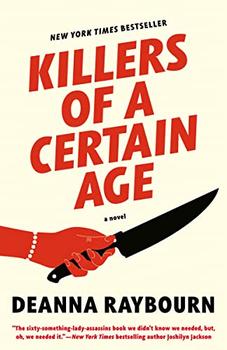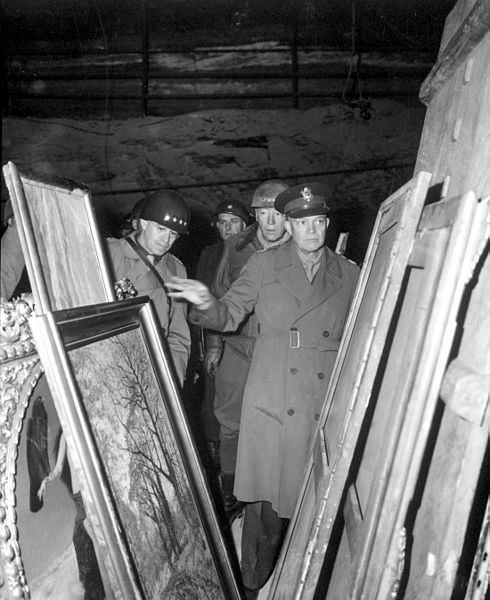Summary | Excerpt | Reading Guide | Reviews | Beyond the Book | Read-Alikes | Genres & Themes | Author Bio

This article relates to Killers of a Certain Age
 In Deanna Raybourn's novel Killers of a Certain Age, four women are betrayed by a fictional organization of assassins they joined that was formed to hunt down and kill former Nazis after the end of World War II and the fall of the Third Reich. Part of the organization's goal is recovering any artworks the Nazis may have looted and hoarded, and returning the art to its previous, rightful owner.
In Deanna Raybourn's novel Killers of a Certain Age, four women are betrayed by a fictional organization of assassins they joined that was formed to hunt down and kill former Nazis after the end of World War II and the fall of the Third Reich. Part of the organization's goal is recovering any artworks the Nazis may have looted and hoarded, and returning the art to its previous, rightful owner.
Indeed, the Nazis looted more than 20% of the art of Europe, according to the US National Archives. As early as 1933, they began purging "degenerate art"—Cubist, Surrealist, Expressionist and Impressionist paintings—from German public institutions, some of which they destroyed. "We know that they burned several thousand—at least—paintings that they thought were actually toxic to the German spirit," historian Elizabeth Campbell Karlsgodt told Slate. "[But] they didn't destroy the art they valued."
The Nazis didn't just remove art from museums—they also stole art from Jewish families they were persecuting, and plundered synagogues, libraries and archives in western Europe. In 1940, Hitler set up an official Nazi office to confiscate major art collections in Nazi-occupied territories.
Much of the plundered art was recovered by a team known as the "Monuments Men"—art experts who were charged by President Roosevelt during WWII to, according to Karlsgodt, "protect cultural heritage." Their initial task was to protect historic buildings, but they also discovered mines that stored Nazi caches of art.
Still, many items were not recovered, and even the art that was recovered was not always returned. In 1997, the editor of Trace, a register of stolen art, said that at least 100,000 works of art taken in the Nazi occupation remained missing or out of the possession of their rightful owners.
In 2016, PBS reported on people who track down art that was stolen from their families during the Holocaust and lay claim to it—even though it's now in possession of museums or universities. One man, Simon Goodman, had Dutch grandparents who were forced to sell their art collection when the Nazis occupied the Netherlands. The Nazis told his grandparents they would survive if they sold them the art, but after they signed it over, they were taken to a concentration camp and killed. When the art resurfaced, Goodman said, the Dutch government "didn't consider a forced sale to be any kind of extenuating circumstances"—they didn't admit that the Goodman family had a claim to it. Finally, Goodman and his brother sued in order to regain possession of one of their grandfather's paintings, a valuable Degas that had been donated to the Art Institute of Chicago. They won the suit, making it the first successful claim of ownership over Nazi-looted art in the US, and many more families have followed in their footsteps since.
General Dwight D. Eisenhower inspecting art stolen by Germans in a salt mine in Germany (1945), via National Archives
Filed under Music and the Arts
![]() This "beyond the book article" relates to Killers of a Certain Age. It originally ran in October 2022 and has been updated for the
August 2023 paperback edition.
Go to magazine.
This "beyond the book article" relates to Killers of a Certain Age. It originally ran in October 2022 and has been updated for the
August 2023 paperback edition.
Go to magazine.
Your guide toexceptional books
BookBrowse seeks out and recommends the best in contemporary fiction and nonfiction—books that not only engage and entertain but also deepen our understanding of ourselves and the world around us.